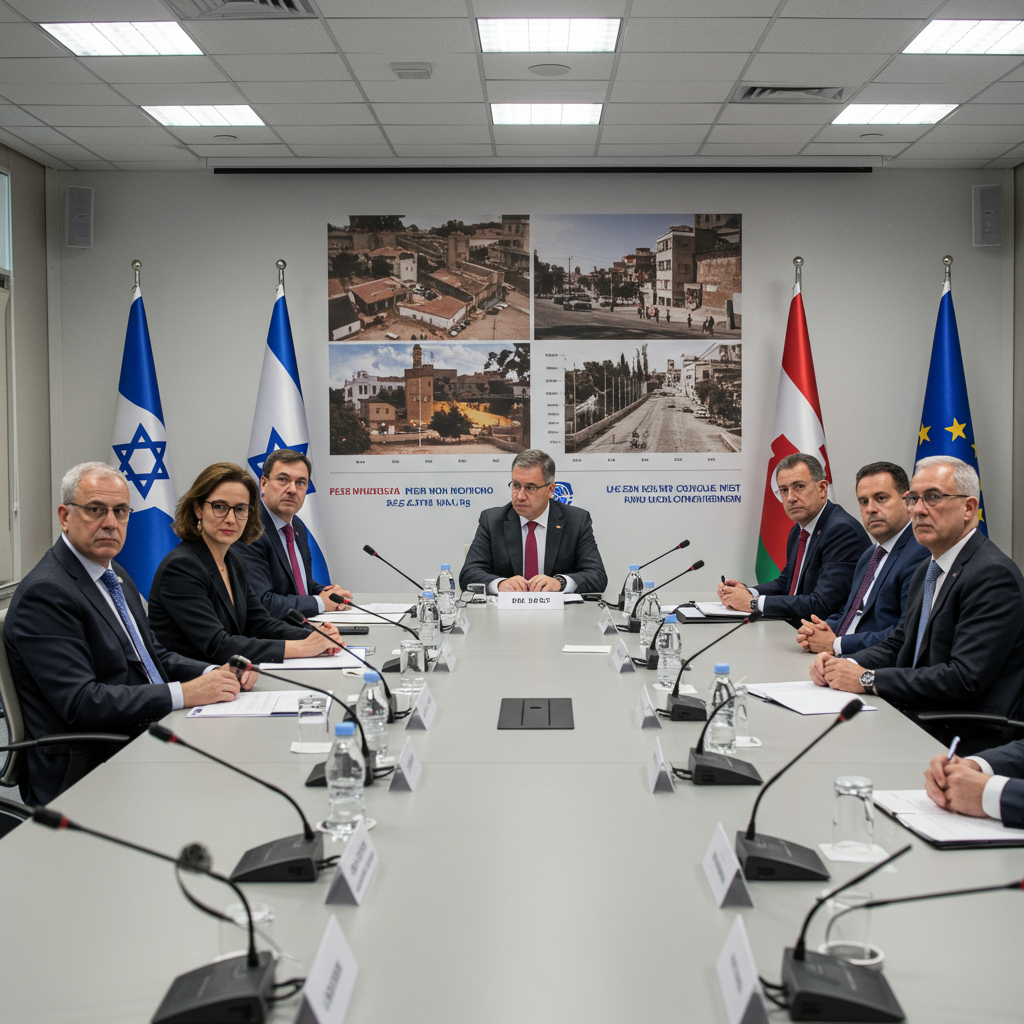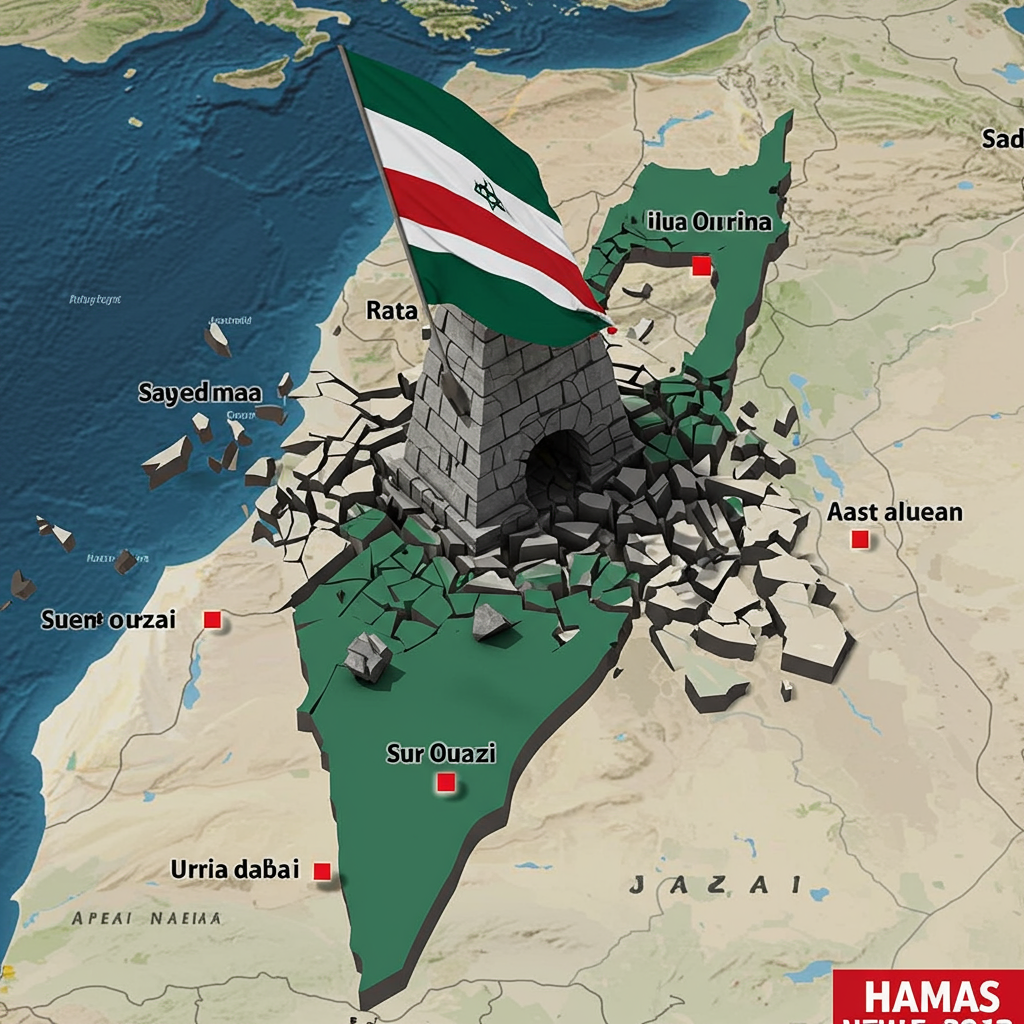US President Donald trump hosted Israeli Prime Minister Benjamin Netanyahu at the White House on July 7, 2025. The high-stakes meeting centered on crucial ceasefire talks aimed at ending the devastating 21-month conflict in the Gaza Strip. Despite recent negotiation setbacks, Trump expressed notable optimism, signaling potential movement on a deal that has remained elusive for months.
Trump told reporters the talks were “going along very well.” He voiced confidence that Hamas, the group controlling Gaza, was ready to agree to a truce. “They want to meet and they want to have that ceasefire,” the President stated in unexpected remarks, projecting a positive outlook on the challenging peace process.
Navigating Complex Ceasefire Negotiations Amidst Conflict
The White House meeting occurred as indirect ceasefire discussions between israel and Hamas continued in Qatar. Earlier rounds had concluded without a major breakthrough. However, negotiations were slated to resume, with US Middle East envoy Steve Witkoff expected to join later in the week to push for an agreement. The urgency of these talks is underscored by the severe humanitarian crisis in Gaza, where tens of thousands of Palestinians have been killed and displacement is widespread, with UN estimates indicating nearly half a million people face famine.
Discussions during the meeting also touched upon the future of Palestinians in Gaza. Trump mentioned having cooperation from countries neighboring Israel regarding potential relocation plans. Netanyahu elaborated, stating he was working closely with the United States to find nations willing to offer Palestinians a “better future.” He framed this as a matter of “free choice.” “If people want to stay, they can stay,” Netanyahu said, “but if they want to leave, they should be able to leave.” Human rights groups have raised concerns that relocation amidst war could amount to forcible transfer, a potential war crime under international law. The Palestinian presidency has previously rejected such plans, asserting they would violate international law.
Obstacles and the Proposed Deal
A US-backed ceasefire proposal reportedly involves multiple stages over a 60-day truce. Under this plan, Hamas would release 10 living hostages and the bodies of 18 deceased hostages. In exchange, Israel would release an unspecified number of Palestinian prisoners and withdraw from certain areas of Gaza. Israel currently controls roughly two-thirds of the territory.
Significant hurdles continue to impede progress on a deal. A key sticking point revolves around humanitarian aid distribution. Hamas insists on halting the work of the Gaza Humanitarian Foundation. The Israeli delegation, however, reportedly refuses to discuss this issue, citing a lack of authorization. Another major obstacle is Hamas’s demand for a written guarantee that the proposed 60-day ceasefire would be extended as long as negotiations are ongoing. US Ambassador to Israel Mike Huckabee recently indicated uncertainty regarding whether such a guarantee would be provided. This lack of certainty highlights the delicate nature of the discussions.
The Future of Gaza and Palestinian Statehood
Beyond the immediate ceasefire, the leaders discussed the long-term status of Gaza. Netanyahu appeared to temper expectations for full Palestinian statehood. He stated that Israel would “always” maintain security control over the Gaza Strip. “Now, people will say it’s not a complete state, it’s not a state,” Netanyahu remarked, seemingly dismissive of that concern. “We don’t care.” This position contrasts sharply with international calls for a two-state solution.
During the meeting, Netanyahu also announced a notable gesture: he had nominated President Trump for the Nobel Peace Prize. Netanyahu presented a letter he claimed he had sent to the prize committee. He praised Trump for “forging peace as we speak, in one country, in one region after the other,” referencing apparent de-escalation efforts. For Trump, who has frequently expressed a desire for the award, this nomination, particularly from Netanyahu, was described as “very meaningful.”
Meeting Dynamics and Broader Regional Tensions
The White House had initially planned the encounter as a private dinner. Officials described the primary focus as pushing for an end to the war and the return of all hostages. However, the format was changed, making the meeting open to the media. This public platform is more typical for Trump when hosting foreign leaders.
The meeting marked Trump’s third face-to-face discussion with Netanyahu since returning to office roughly six months prior. It was their first encounter since the US supported Israeli air strikes on Iranian nuclear sites and subsequently brokered a ceasefire in a 12-day conflict between Israel and Iran. There is a strong sense among some observers that this recent period of conflict and de-escalation may have created a more favorable environment for resolving the Gaza war. Witkoff reportedly mentioned a US meeting with Iran scheduled for the following week. Trump also indicated a desire to lift sanctions on Iran “at some point,” suggesting a potential diplomatic shift.
While Netanyahu was at the White House, dozens of protesters gathered outside the security gates. Waving Palestinian flags, they shouted calls for his arrest. This protest occurred in the context of an International Criminal Court (ICC) arrest warrant issued in November against Netanyahu, former defense minister Yoav Gallant, and Hamas commander Mohammed Deif for alleged war crimes and crimes against humanity related to the conflict. Netanyahu has rejected the allegations, calling the warrants antisemitic. The Trump administration previously imposed sanctions on four ICC judges, labeling their actions against the US or Israel as “baseless.”
White House spokeswoman Karoline Leavitt reiterated the administration’s stance, stating that ending the war in Gaza was Trump’s “utmost priority.” She added that Trump wanted Hamas to agree to the proposed 60-day deal “right now.”
Frequently Asked Questions
What was the main outcome of the Trump-Netanyahu meeting regarding Gaza ceasefire talks?
During the meeting, President Trump expressed surprising optimism about the ongoing Gaza ceasefire talks. He stated they were progressing “very well” and conveyed confidence that Hamas was willing to agree to a truce. While no immediate breakthrough was announced, Trump’s positive remarks suggested a potential for movement in the stalled negotiations, emphasizing the urgency of reaching a deal to end the prolonged conflict.
What was discussed about the future of Palestinians in Gaza, including relocation plans?
The leaders discussed potential relocation plans for Palestinians from Gaza. Trump noted cooperation from neighboring countries, while Netanyahu stated he was working with the US to identify nations willing to accept Palestinians for a “better future.” He presented the idea as a “free choice” to stay or leave, contrasting it with Gaza being a “prison.” However, the Palestinian presidency and international law experts have rejected such plans as potentially violating international law.
Why was Donald Trump nominated for the Nobel Peace Prize during the meeting?
Israeli Prime Minister Benjamin Netanyahu announced he had nominated President Trump for the Nobel Peace Prize during their White House meeting. Netanyahu presented a letter to the prize committee, crediting Trump with “forging peace” across different regions. This nomination occurred shortly after the US brokered a ceasefire between Israel and Iran, following US support for Israeli strikes on Iranian nuclear sites, a development seen by some as creating conditions for wider peace efforts.
Ending the conflict remains a critical goal, complicated by persistent humanitarian issues, diplomatic obstacles, and the complex political landscape involving multiple regional and international actors.




